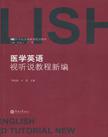医学英语视听说教程新编
出版时间:2010-8 出版社:暨南大学 作者:蔡耿超//许瑾 页数:204
前言
中国的英语教学近年来取得了骄人的成绩,这是不争的事实。但回溯历史,我国的外语教学即便从清代最早培养译员的京师同文馆算起也不过100多年的历史。期间受西方语言教学理论与实践的影响,我国的外语教学经历了从传统语言教学到结构主义教学到交际法教学的转变,教学的重点也经历了从知识的传授到技能的培养到交际能力的培养的转变。 进入21世纪,教育部颁布了《大学英语课程教学要求》(以下简称《课程要求》),对高等学校非英语专业本科生大学英语课程教学提出了一般要求、较高要求和更高要求。一般要求是高等学校非英语专业本科毕业生应达到的基本要求,较高要求或更高要求是为有条件的学校根据自己的办学定位、类型和人才培养目标所选择的标准而推荐的。按照《课程要求》,大学英语的课程体系应该将综合英语类、语言技能类、语言应用类、语言文化类和专业英语类等必修课程和选修课程有机结合起来,以确保不同层次的学生在英语应用能力方面得到充分的训练和提高。《国家中长期教育改革发展规划纲要(2010_2020年)》也对我国今后十年的高等教育发展提出了明确的目标——完成从数量到质量的转变,进而提高我国高等教育的国际化办学水平,培养大批具有国际视野的跨学科复合型的创新人才。
内容概要
本书以人体生命的自然历程为线索,分为生命篇、疾病篇及保健篇三大模块,包括生育、人体机能等共计八章,每章包含内容相关的视(音)频四至七个不等,总体上形成一个相对完整的内容体系。全书以极其生动的医学视(音)频为构建材料,真实再现、演绎生命的神奇,其中适当渗透了医学英语词根词缀的内容,知识性与趣味性并重,科普性与学术性兼备。通过寓教于乐、深入浅出的形式,力求克服医学知识晦涩难懂乃至枯燥的难点,创造相对宜人的学习氛围。 全书以医学英语为主干,图、文、视、听、说穿插其中相得益彰。每一篇、节开头的中文导语服务于对应内容,却不囿于机械的医学解释,而是尝试跳出医学的窠臼,在精神层面引入对生命本体的思考和人文关怀。在此意义上,本书已然突破了专业的壁垒。
作者简介
蔡耿超,广东陆丰人,硕士。现任职于南方医科大学外国语学院,主要从事医学英语教学、翻译理论与实践研究,讲授医学英语课程。 许瑾,山西运城人,硕士。现任职于南方医科大学外国语学院,主要从事医学英语教学、专门用途英语研究,讲授医学英语课程。
书籍目录
总序前言生命篇Chapter One 生育 Section One 胚胎发育 Section Two 分娩 Section Three 剖腹产 Section Four 哺乳Chapter Two 人体机能 Section One 大脑 Section Two 视觉 Section Three 听觉 Section Four 心脏 Section Five 肺 Section Six 血压 Section Seven 消化Chapter Three 成长变化 Section One 青春期 Section Two 月经 Section Three 更年期 Section Four 衰老 Section Five 生命数据疾病篇Chapter Four 常见病及防治1 Section One 头痛 Section Two 痤疮 Section Three 近视/远视 Section Four 过敏性鼻炎 Section Five 喉炎 Section Six 流感Chapter Five 常见病及防治2 Section One 中风 Section Two 心脏病发作 Section Three 糖尿病 Section Four 肾结石 Section Five 阑尾炎 Section Six 阳痿Chapter Six 常见手术疗法 Section One 激光视力矫正手术 Section Two 扁桃体切除术 Section Three 胆囊切除术 Section Four 肾脏移植 Section Five 肝脏移植保健篇Chapter Seven 常见美容整形 Section One 提眉术 Section Two 激光换肤 Section Three 肉毒杆菌驻颜 Section Four 隆胸 Section Five 腹部整形术Chapter Eight 健康知识 Section One 红肉与早亡 Section Two 女性与酒精 Section Three 空调与肥胖 Section Four 维生素与 Section Five 健康运动指南Appendix 1 视听材料文本Appendix 2 练习答案Appendix 3 医学英语词根词缀Afterword 后记
章节摘录
Pregnancy and delivery involve the entire female reproductive system, including the ovaries, fallopian tubes, uterus, and vagina. After an egg is released from an ovary and is fertilized, it travels slowly through the fallopian tube to the uterus. During this time it begins to divide until it has grown to about 100 cells. The egg, now called a blastocyst, then implants in the tissue lining the wall of the uterus. The uterus will then house and protect the developing fetus for 38 weeks, or approximately 9 months. When the fetus has matured and birth is imminent, the baby begins to go through a series of movements that help it navigate through the birth canal. As the uterus begins to contract with the pains of labor, the opening of the uterus, called the cervix, dilates to allow the baby to pass into the vagina. This muscular tube expands to accommodate the babys head and shoulders while uterine contractions continue until the baby enters the world in what is in most cases a downward facing position. At this point, the baby will be cleaned and checked for good health before being placed on its mothers chest to rest and bond.
图书封面
评论、评分、阅读与下载
用户评论 (总计32条)
- 一本教材,图片很精致,光盘内容也不错。
可以说是一本医学英语的入门书吧,词汇都是基础的,内容基本有点医学常识的人都能看明白。 - 我是教这门课程的老师,买了五六本类似的教材,就属这本教材不错。视频资料较全,知识面较广。建议用于医药专业的的二、三年级学生使用,难易程度适中。如果对于英语专业的学生,除了医学词汇外,设定的题目就过于浅显了。此教材也是一本医学英语很好的自学的视听教材。
- 医学生学习所必备的英语资料!
- 光盘内容不错。
- 这书内容太少了!
- 要上老师的课,指定书本……
个人觉得内容不够全……不过这不是书本的错。 - 很不错,有图,并且简单易懂
- 得好好学习啊。。。。
- 商品部不错,邮寄很快!
- 不错 视频蛮清晰的 而且对照的挺好 感觉不错
- 个人觉得不错,音频结合,可读性强。
- 各方面都很符合我的要求
- 很喜欢 设计得挺合理的
- 有点被骗的感觉,全是听力题目。。。
- 学校要求买的书,具体还没来得细细的看,整体来看不错,也有有用的附录。
- 感觉没什么大用处!不过还行吧
- 原來很薄的一本書,編者有我們老師..
- 很基础的医学英语,可以帮助打基础。
- 对一个对医学了解不多的人这本书有帮助,
- 是我们老师编的书,后面有词根,对于背专业单词特别好,但就是单词少了点,如果可以再丰富一下就好了
- 喜欢里边的内容,对于初学者很有帮助。
- 有光盘辅助,挺好。
- 书中的引子部分非常好
- 这个价位来说很不错的了~
- 书质量一般,比较脏,不过内容还可以。
- 视频很短,内容不多,书本只有一些练习,没有课文。对不起这个价格啊。
- 书还不错!就是太坑了,来得很迟,快到11号才到,可以说多收了我钱!
- 还没看 但书的包装太差 都皱了 纸质也不好 发黄
- 到货时间比较快,只是书被压折过,也不太干净...
- 视频内容太简单了
- 大致看了一下,内容比较少
- 光盘有裂纹,没法学习,浪费钱,寄回去我也闲麻烦,这么久才拿到!~包装也很脏很差。。
相关图书
- 英美概况
- 商务英语谈判
- 实用外事接待英语口语
- 新课标学生成语词典
- It Wasn't Much: True Tales of Ten Oklahoma Heroes (精装)
- Space Horrors: Full-Throttle Space Tales #4 (平装)
- Pro/ENGINEER Wildfire 5.0多轴数控加工实例详解
- Pro/ENGINEER野火5.0交互式曲面造型设计实例详解
- 初中同步作文·7年级(上)
- 小学生作文手册 (平装)
- 发烧的地球-温室效应
- 建筑节能设计
- 童趣摩尔庄园
- 不一样的生活
- 现代控制理论基础
- 机械制图
- 电子系统设计
- 先进材料力学行为实验指南
- 电子技术基础与技能
- 机电一体化技术应用
- 数字电子技术
- 机械制造基础
- 建筑制图与识图
- 电路与电子技术简明教程
- 数字电路与系统教学实验教程
